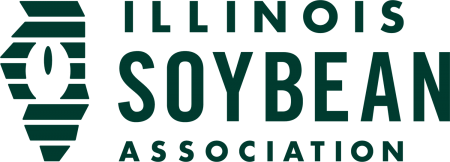ILSOYADVISOR POST
Soybean Summit: Key Insights Every Grower Needs for 2018
On January 11, Springfield, Illinois became the capitol of soybean knowledge and expertise. The ILSoyAdvisor Soybean Summit provided Illinois soybean growers with a centralized hub of information to start off the new growing season on the right foot. From field agronomists, to university researchers, to fellow farmers the day was packed full of expert soybean advice. Here’s a birds-eye view of the topics discussed throughout the day:
Soybeans: The Hits Just Keep on Coming
Dale Durchholz, AgriVisor, LLC
- As GDP per capita rises, meat consumption per capita rises with it.
- The trend in world meat consumption is exploding, especially in Asian countries.
- This trend is mimicked when it comes to protein meal and oilseeds, such as soybeans.
- The demand for soybeans continues to trend upward, while prices still are down.
- Farmers must navigate dealing with meeting the increasing demand, while also maintaining profitability.
Management Philosophies Needed to Reach 100-Bushel Soybeans
Kris Ehlers, Ehler Bros. Co.
- While harvesting 100-bushel beans requires a multi-faceted approach, there are a few key learnings from soybean retailer Kris Ehler, who has consistently been helping his farmers grow 100-bushel beans the past few years.
- To boost yield, everything farmers do during the growing season should be focused on – the number of pods on a plant, number of beans per pod, and seed size and weight.
- Ehler Bros. plot data consistently show that earlier planting dates out-yield later planting dates.
- Spend time in your fields throughout the season and be prepared to adjust strategy before there are problems.
- Rely on trusted advisors and proven research to get growers to the next level.
Boron Management for Soybean Production
Nathan Slaton, University of Arkansas System Division of Agriculture
- Boron is an essential plant nutrient and dicots like soybeans require more boron than monocots like corn.
- Boron deficiency affects all stages of the growing cycle and the stress is multiplied when water is lacking.
- Tissue testing offers the best glimpse into catching boron deficiencies and is best evaluated by collecting trifoliate leaves at the R2 stage.
- However, there is little evidence to support that supplemental boron is the link to ‘ultra-high’ soybean yields.
Selecting Management Strategies for Producing High Yields and Profitable Soybeans
Stephanie Porter, Burrus® Hybrids and Todd Steinacher, AgriGold®
- Porter and Steinacher reviewed strategies that promote higher soybean yields and greater profitability.
- Weather, fertility, variety, foliar protection, seed treatment and row spacing are six factors that influence soybean yield.
- Five years of trials in Illinois show that the following grower-controlled management practices have the greatest impact on increasing yield: Improved soil fertility, variety selection and use of foliar protection (fungicides and insecticides).
Learning How to Optimize Yield by Resource Allocation in Soybean Production Systems
John McGillicuddy, McGillicuddy-Corrigan Agronomics
- With a fixed amount of water, sunshine and critical minerals, pod retention will be limited by at least one of these factors.
- To produce high-yielding soybeans growers must master the dynamic balance between soils, sunlight, water, population, spacing and planting date.
- Another key consideration is to make sure resources aren’t going to the parts (stems, roots, leaves) that don’t produce profit; but instead to the part (beans) that sells.
What the Illinois Yield Challenge Results Have Taught Us About Managing Soybeans
Mike Scheer and Dan Davidson
- The past eight years that ISA has been sponsoring a yield challenge have brought in nearly 1,000 entries and allowed several growers to break 100 bushels.
- One of the highlights of the program is that growers have been incentivized to try new practices and share learnings with growers across the state.
- Another benefit of the challenge is that the average yield across the state has steadily increased and soybean management practices have improved.
Habits of Financially Resilient Farmers
Gary Schnitkey, University of Illinois at Urbana-Champaign
- Through good and bad years, there are commonalities among the most profitable farmers.
- A study sponsored by the Illinois Soybean Association explored on-farm practices that led to healthier bottom lines.
- The study found seven habits of the most successful farmers, including planting dates, on-farm investments and management practices.
Challenges and Viable Solutions in Soybean Production Farmer Roundtable
Travis Albin (Villa Grove), Jason Boehler (Litchfield), Tim Seifert (Auburn)
- Soybeans produce high yields but require more intense management than corn.
- A few practices these fellow farmers have adopted include precision technology, reduced tillage, cover crops, and exploring different seed technologies.





Comments
Add new comment